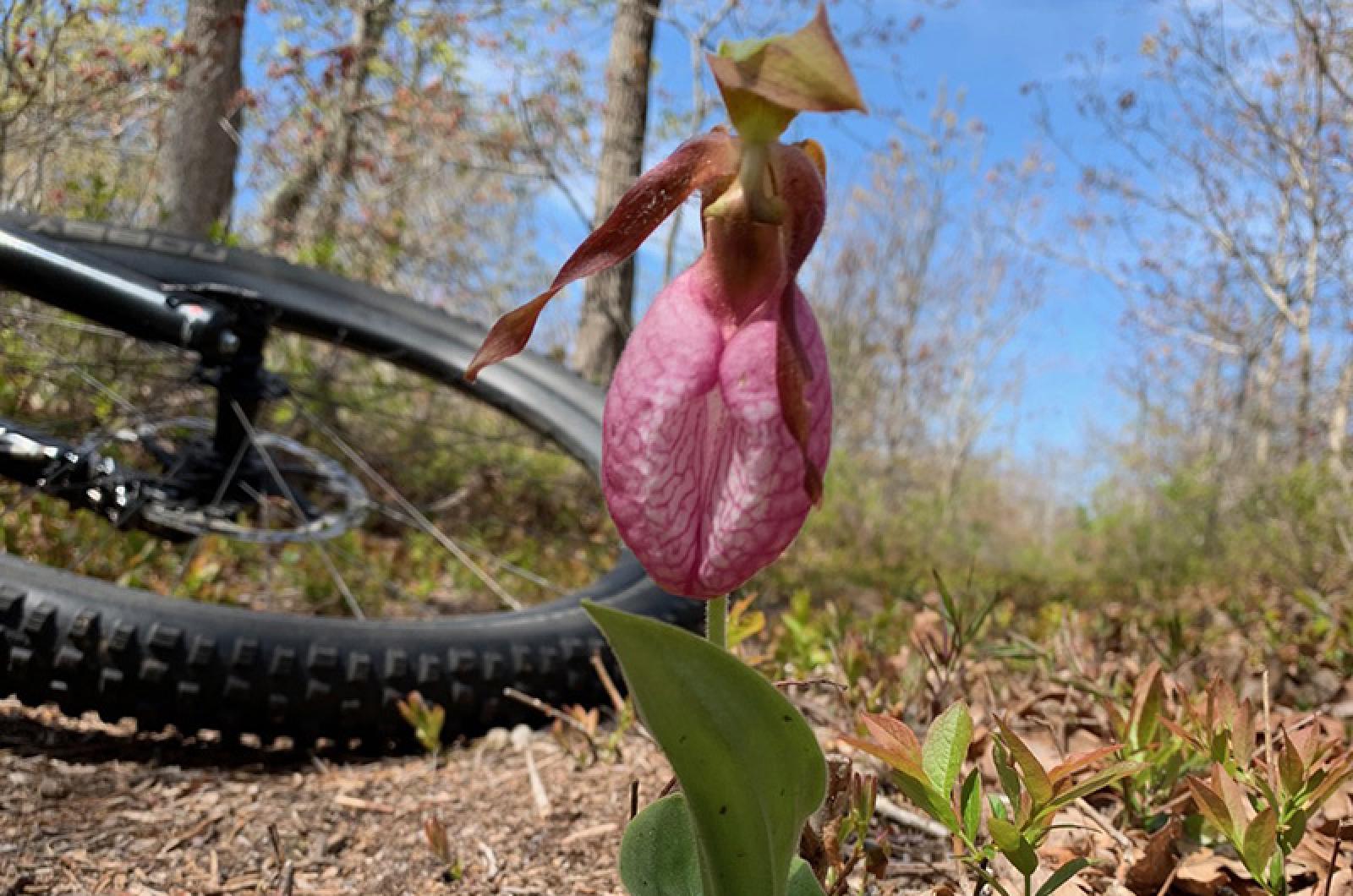Myron Garfinkle is a man that takes time to smell the flowers.
It was not roses that recently had his attention, but orchids — more specifically, lady’s slippers. Yes, Myron reports, they are blooming and were so stunning as to cause him to stop his bike ride in the State Forest to capture a photo.
Unquestionably the most unique and identifiable flower in the woods, lady’s slippers hold a special place in the hearts and minds of many.
Start with Charles Darwin, who was flummoxed by this flower. It turned on its head his natural selection theory by thriving despite adaptations that limit its own reproduction. Darwin wanted to further his research into these flowers, but was unable to successfully propagate it.
In his 1867 treatise on the fertilization of Cypripediums, the genus to which lady’s slippers belong, he explains “As the sexes of Orchids form a subject of considerable interest, I beg to forward you the accompanying specimens of Cypripedium insigne. Of this I have several plants, all however originally derived from the same piece, but in spite of numerous attempts, I have uniformly failed to fertilise the flowers.”
Science has not solved this problem. It still can be challenging to successfully propagate this plant. However, we now understand why.
A symbiotic relationship exists between the lady’s slipper and a fungus of the genus Rhizoctonia. The fungus breaks open the lady’s slipper’s seed and attaches itself to it. Once attached, the fungus acts as a lifeline, delivering food and nutrients needed to allow for growth of the orchid. Once the lady’s slipper matures it can produce its own nutrients and the roles reverse with the orchid now providing nutrients to the fungus for its survival.
This explains why planting lady’s slippers from seed or transplanting them is often unsuccessful. It has been estimated that transplants are effective less than five percent of the time and furthermore the seed to flowering period can be up to eight years. While natural sexual reproduction does occur, thanks to the help of insect pollinators, lady’s slippers can also reproduce vegetatively.
So resist the urge to dig up lady’s slippers for planting elsewhere. In addition to the high rate of failure, you would be breaking the law.
Massachusetts General Law Part IV, Title 1 Chapter 266 Section 116A describes these protections for certain flowers: “No person shall pull up or dig up the plant of a wild azalea, wild orchid or cardinal flower (lobelia cardinalis), or any part thereof, or injure any such plant or any part,” even going further to limit its distribution, noting “no person shall buy or sell, or offer or expose for sale, any such flower, or the whole or any part of the plant thereof, knowing, or having reasonable cause to believe, that in procuring such flower or plant the foregoing provisions have been violated.”
Unfortunately the law, promulgated in 1935, provides a penalty of “a fine of not more than five dollars.” That probably isn’t as much of a deterrent as these beauties deserve.
Lady’s slippers are disappearing for reasons other than plant poaching. Habitat loss, scarcity of alkaline soils, and deer browse are adding to its decline.
The late spring arrival of these flowers annually give us hope and proof of their local health and persistence. Every report is a botanical victory, even if Darwin would insist it’s an evolutionary conundrum.
Suzan Bellincampi is director of the Felix Neck Wildlife Sanctuary in Edgartown, and author of Martha’s Vineyard: A Field Guide to Island Nature and The Nature of Martha’s Vineyard.




Comments (1)
Comments
Comment policy »